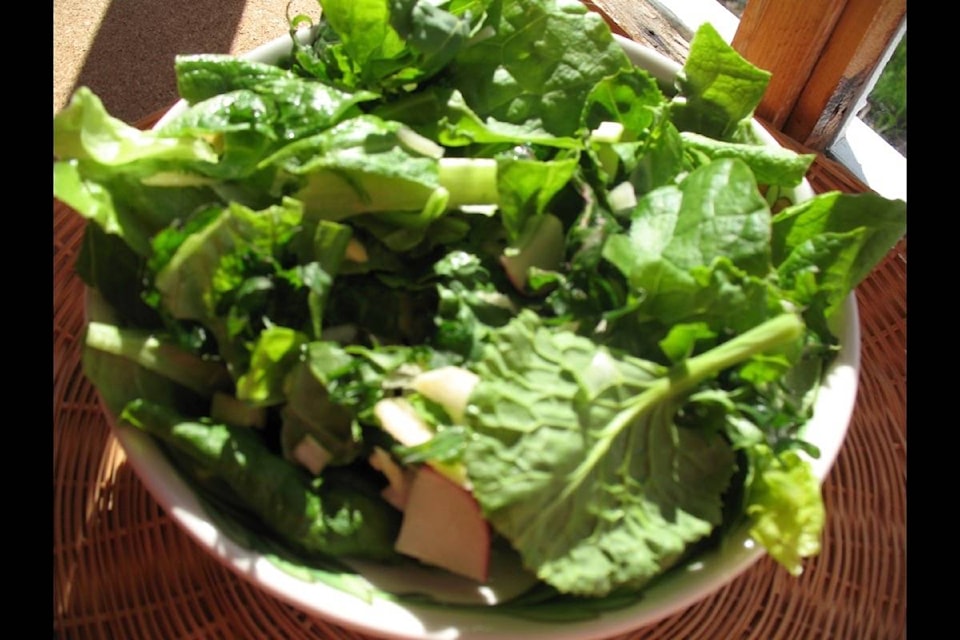Though the rain still pours and night temperatures plummet my garden is responding to longer and warmer days. So are the weeds and lawn (the moss, at least) but that’s another topic.
I’m going to pretend there won’t be another frost and will blithely get on with the most important thing in life — gardening! Who can wait? Storage crops need to be eaten soon before they start to rot and overwintering crops need to be harvested before they bolt and use all their energy for reproduction.
My saved squash have developed a few dark spots and my garlic is sprouting in the cold room, so I will substitute the squash for applesauce and mashed bananas in a couple of baking recipes or grate them into potato and onion latkes (potato pancakes). The garlic I will dry and grind into powder that should see us until the next harvest. Why buy the tasteless stuff from China when it’s so easy to grow?
Crops left in the garden over winter will be coming on now, providing interim goodies until the spring crops take over. Turnips and leeks should be dug up: eat them or store turnips for a few weeks in the cold room and slice leeks to be frozen or dried. Overwintered purple sprouting broccoli will be harvestable soon and Brussels sprouts heads can be used just like cabbage. After you’ve mercilessly beheaded them, pull them out and, if they have club root, don’t compost them because the heap may not become hot enough to eradicate this disease. Club root looks like cream-coloured lumpy swellings on the root.
It’s best to toss the whole plants into the garbage or burn them. Club root doesn’t make the plant unfit to eat — it just takes energy away from it so the plant grows weakly or dies. Growing your own brassica seedlings with sterile potting soil in your uncontaminated pots will ensure that you don’t bring club root into the garden.
If you sowed hardy winter lettuce last fall it might have survived the winter and will be leafing out, particularly if you protected it with a cloth cover like Reemay. I opened up my cold frame again last week just and discovered two lovely lettuces! The seedlings I had put in there last fall got all chomped up by something so I gave up and left it alone all winter, removing ice and snow from time to time so the plastic wouldn’t break. The only thing I can think of is that the slugs and sow bugs froze, so when the lettuce began regrowing with the spring sun, it had no predators. Hmm, maybe next year I’ll have transplants ready to put in there after the bulk of winter is over — say around late February or early March instead of in the fall.
Now I’ll get a salad ready for dinner: spiced with fresh green onions, a sprig of herb, some grated turnip, chopped Brussels sprout tops and freshly-cut lettuce, we’ll eat like royalty tonight. That assumes, of course, that the royals are smart enough to eat their vegetables.
On that other topic, can you still call it a lawn if the moss is all that’s left?
